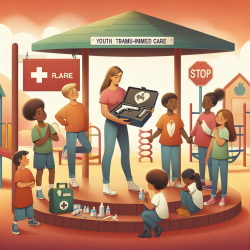Understanding Youth Firearm Injury: A Path to Prevention
Firearms have become the leading cause of death among youth in the United States, surpassing other causes such as cancer and congenital anomalies. The rise in firearm-related injuries and deaths among youth is alarming, especially considering the preventable nature of these tragedies. The article "Youth Firearm Injury: A Review for Pediatric Critical Care Clinicians" by Kaufman, Richmond, and Hoskins provides valuable insights into the epidemiology, risk factors, and prevention strategies for youth firearm injuries.
The Data Behind the Crisis
According to the research, youth accounted for nearly 12% of firearm deaths in 2020, with a significant portion of these deaths resulting from homicides. Boys, particularly those of color, are disproportionately affected. The presence of firearms in homes significantly increases the risk of homicide, suicide, and unintentional injury, especially when firearms are stored loaded or unlocked.
Implementing Trauma-Informed Care
Pediatric critical care clinicians play a crucial role not only in treating injured youth but also in preventing firearm injuries. A trauma-informed approach to care can improve outcomes for recovering youth. This involves understanding the psychological and emotional impacts of firearm injuries and providing holistic support to youth and their families.
Encouraging Secure Firearm Storage
Clinicians can counsel families on the importance of secure firearm storage. Studies show that counseling, combined with the distribution of secure storage devices, can significantly reduce the risk of injury. Engaging caregivers in conversations about firearm safety and storage is essential for preventing youth access to firearms.
Advocacy and Policy Change
Clinicians have an ethical obligation to advocate for policies that promote youth safety. Supporting evidence-based policies such as Child Access Prevention (CAP) laws can motivate secure firearm storage and reduce firearm-related injuries and deaths. Clinicians can collaborate with community organizations to facilitate prevention and recovery efforts.
Moving Forward: A Call to Action
As pediatric practitioners, it's crucial to move upstream and prevent firearm injuries before they occur. This involves separating facts from opinions, partnering with others, educating communities, advocating for evidence-based policies, and providing trauma-informed care. By taking these steps, clinicians can play a vital role in reducing firearm-related harm and promoting the safety and well-being of our youth.
To read the original research paper, please follow this link: Youth Firearm Injury.










